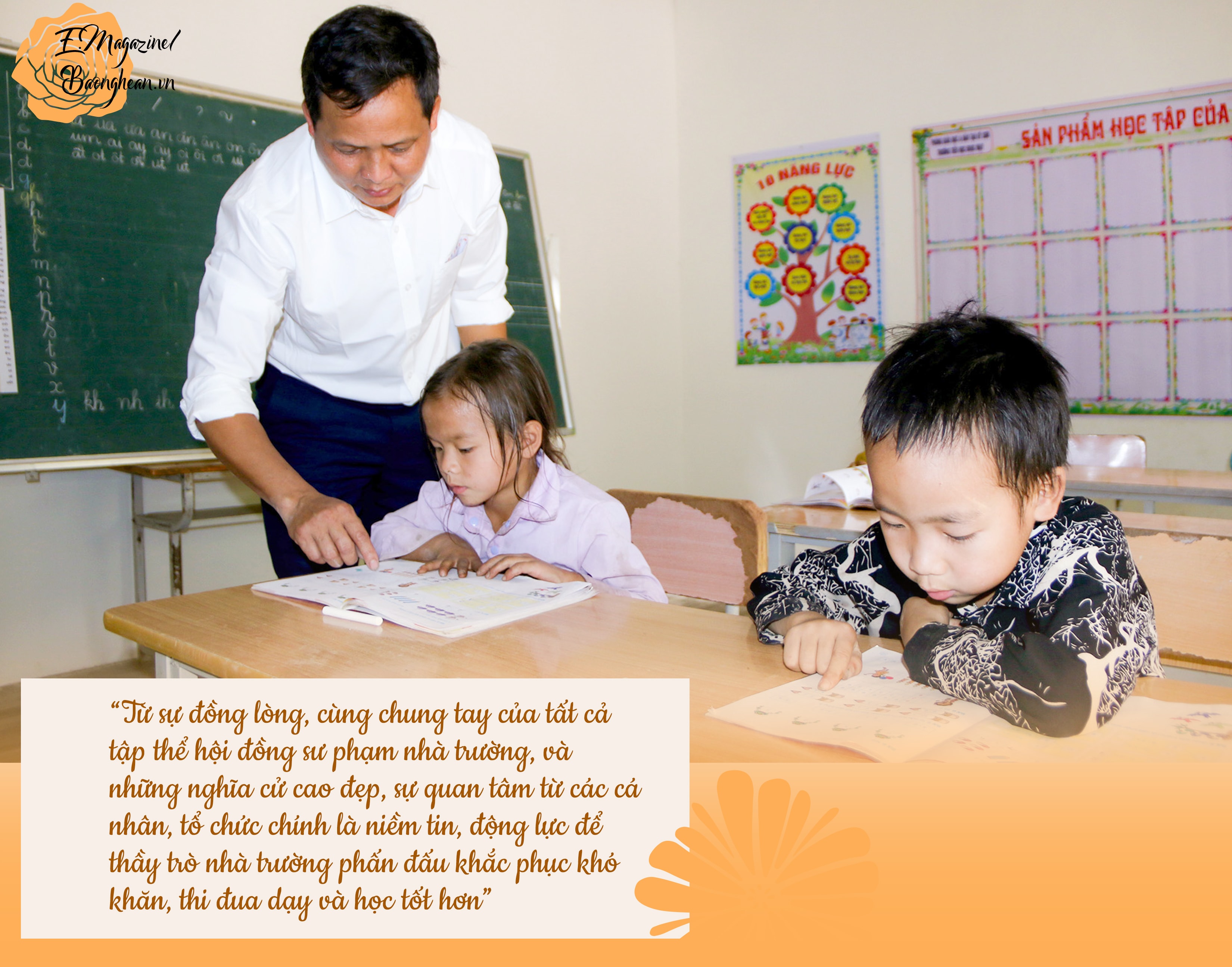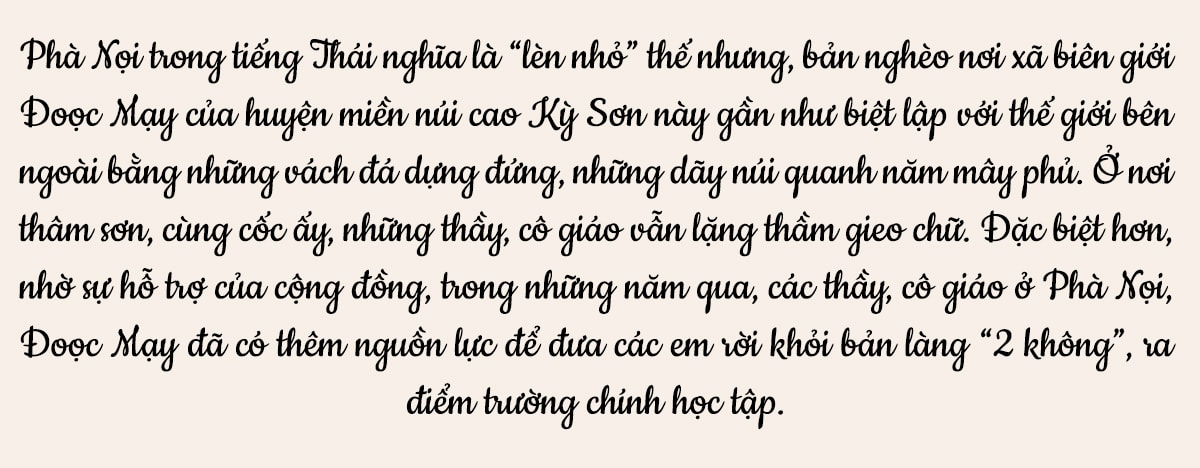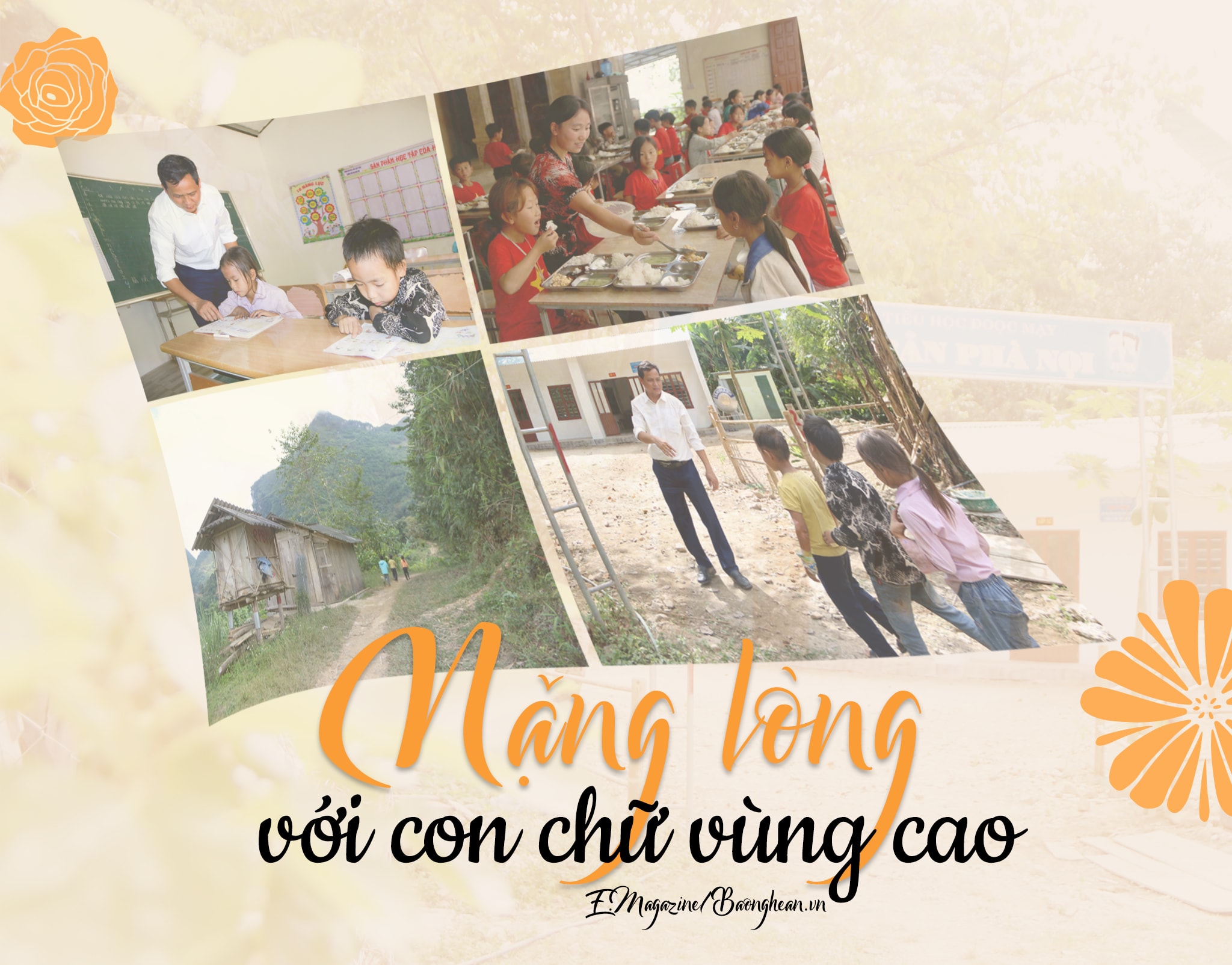

It took me nearly 4 hours, passing through a 60km road with many steep, winding slopes, perched on the edge of a deep abyss from Muong Xen town to reach Doc May Primary School. This is a relatively young school, less than 15 years old, after being separated from Doc May Secondary School. It is impossible to describe all the difficulties and lack of facilities that teachers and students here have to go through. This is the only primary school in the commune where the majority of the Mong ethnic people live. Although there are only 383 households, 71.8% of the commune are poor households. The school has 1 main campus and 3 satellite campuses, but only the main campus has electricity, while the remaining 3 satellite campuses are still without electricity or phone signal.
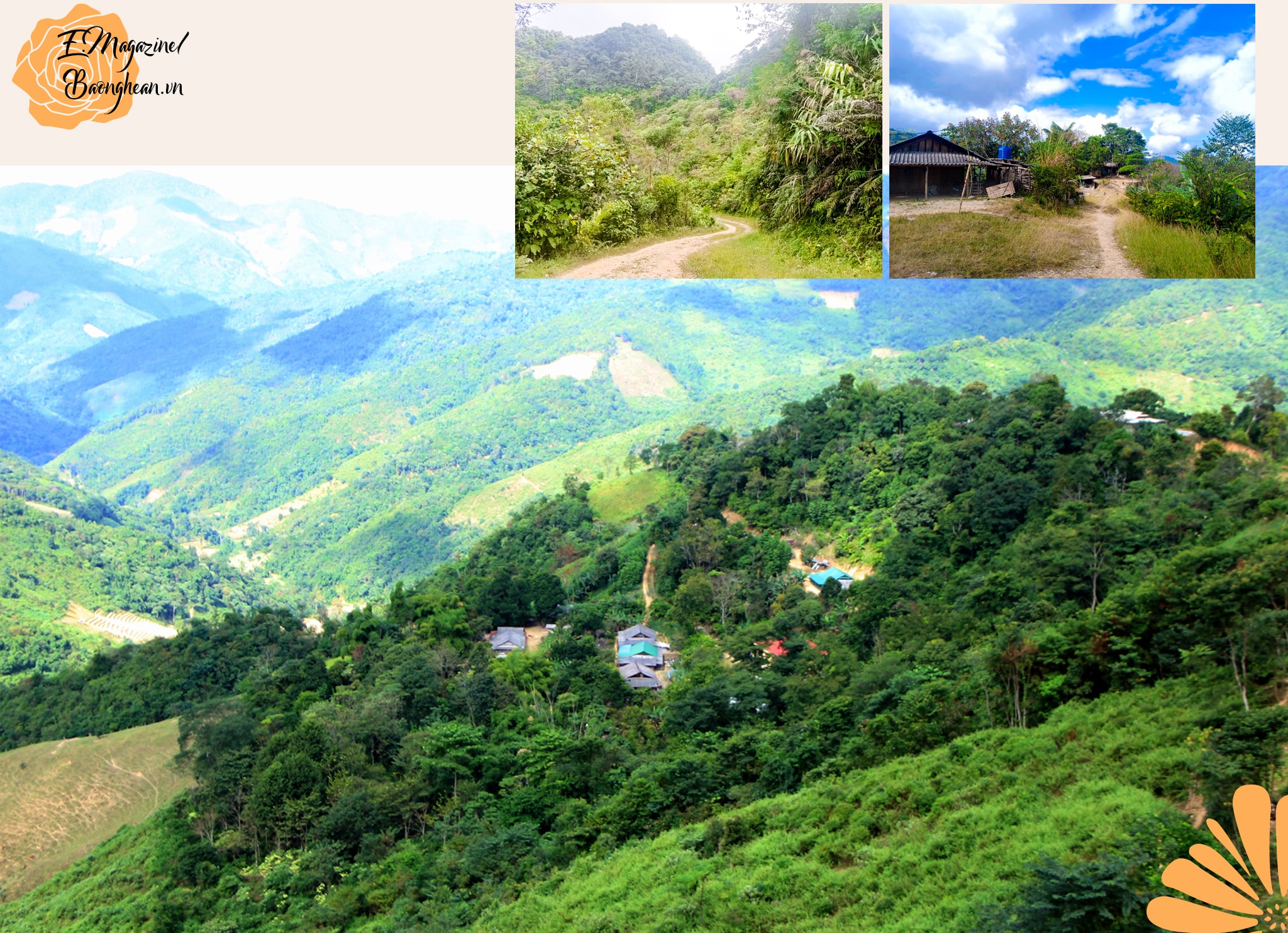
Welcoming and talking to me was Mr. Tran Huu Truong - Principal of Doc May Primary School, a teacher who has been involved in education in Ky Son for nearly 30 years. In 1995, after graduating from Nghe An Mountainous Pedagogical School in Tan Ky, he left Cat Van (Thanh Chuong) with a backpack in hand to come to the difficult land of Ky Son.
“I’ve been around Bac Ly, My Ly, Na Ngoi, Doc May, and it’s been almost 30 years,” said Mr. Truong, reaching out to pour a pot of strong tea that was still steaming. It was early winter in Ky Son, the rising steam mixed with the misty fog that seeped through the wooden walls. It was like that in Doc May this season, the early morning sky was thick with fog, the sun came out and it was clear but very dry. The young students, though accustomed to the harsh weather, had dry, cracked cheeks that looked like dolls with makeup.
The entire Doc May Primary School has only 25 staff and teachers. In addition to the main campus in Pha Lech Phay village, there are 3 satellite campuses in Huoi Vieng, Pha Noi and Noong Han. The satellite campuses are located 5-10 kilometers away from the main campus. Therefore, whoever is assigned to a village stays there, occasionally returning to the main campus for council meetings or monthly meetings.
Knowing that I intended to go to Pha Noi to see how spacious the newly built classroom was, Mr. Truong immediately sent a teacher to "accompany" me and did not forget to tell me, "Then let's go right away so we can come back in time, otherwise if we encounter a rainstorm in the jungle, we will be stuck."
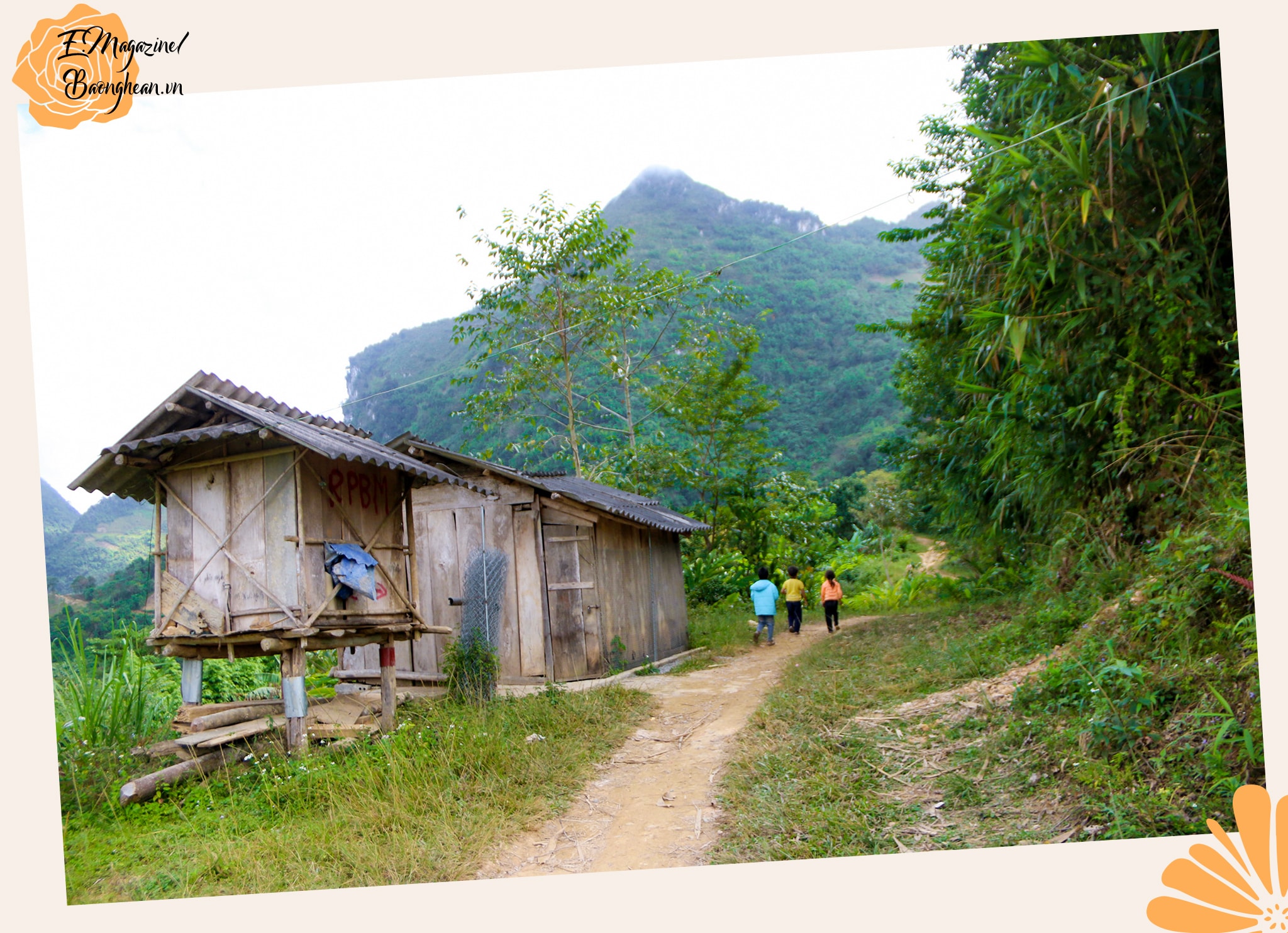
The road to the center of Dooc May commune was difficult, the road to Pha Noi was even more difficult. A rugged dirt road through the steep mountains seemed to touch the sky. The motorbike had just struggled to climb the steep slope and then suddenly plunged down the narrow path. After more than 30 minutes of crossing the pass, we finally reached Pha Noi, a small village with less than 50 houses located halfway up Pha Va peak. Right at the top of the slope was the house of the village chief Gia Va Xau. Knowing that we were going to the remote school, he immediately grabbed us and shook our hands profusely, "The villagers thank the cadres from the lowlands very much. Luckily, the classrooms have been rebuilt now, otherwise in the past, the students and teachers would have suffered too."
The Pha Noi branch has a kindergarten class with 10 children from 3 to 5 years old, and the primary school has 2 classes 1 and 2 with 12 children. Before the classroom was built, students studied in a small wooden house. Since August 2022, this school has been rebuilt to be more spacious.
Teacher Gia Ba Khu is the person in charge of this remote location. He started teaching in 1995. As a Mong person who knows both the language and the letters, he was assigned to teach this remote location. Because the first and second graders are not fluent in Kinh, he has to teach "bilingually" so that the students can pronounce and speak Vietnamese correctly but also keep up with the curriculum.
In previous years, Pha Noi school was taught by teacher Nguyen Trong Toan from Thanh Chuong. After many years working in the mountains, teacher Toan has now moved down to the lowlands. So teacher Khu from the isolated Huoi Vieng school was transferred. Being too familiar with the village life, teacher Khu said - "many colleagues from the lowlands can still stay, I was born and raised here, so why not? As long as the students still need me, and the parents still need me, I will stay."
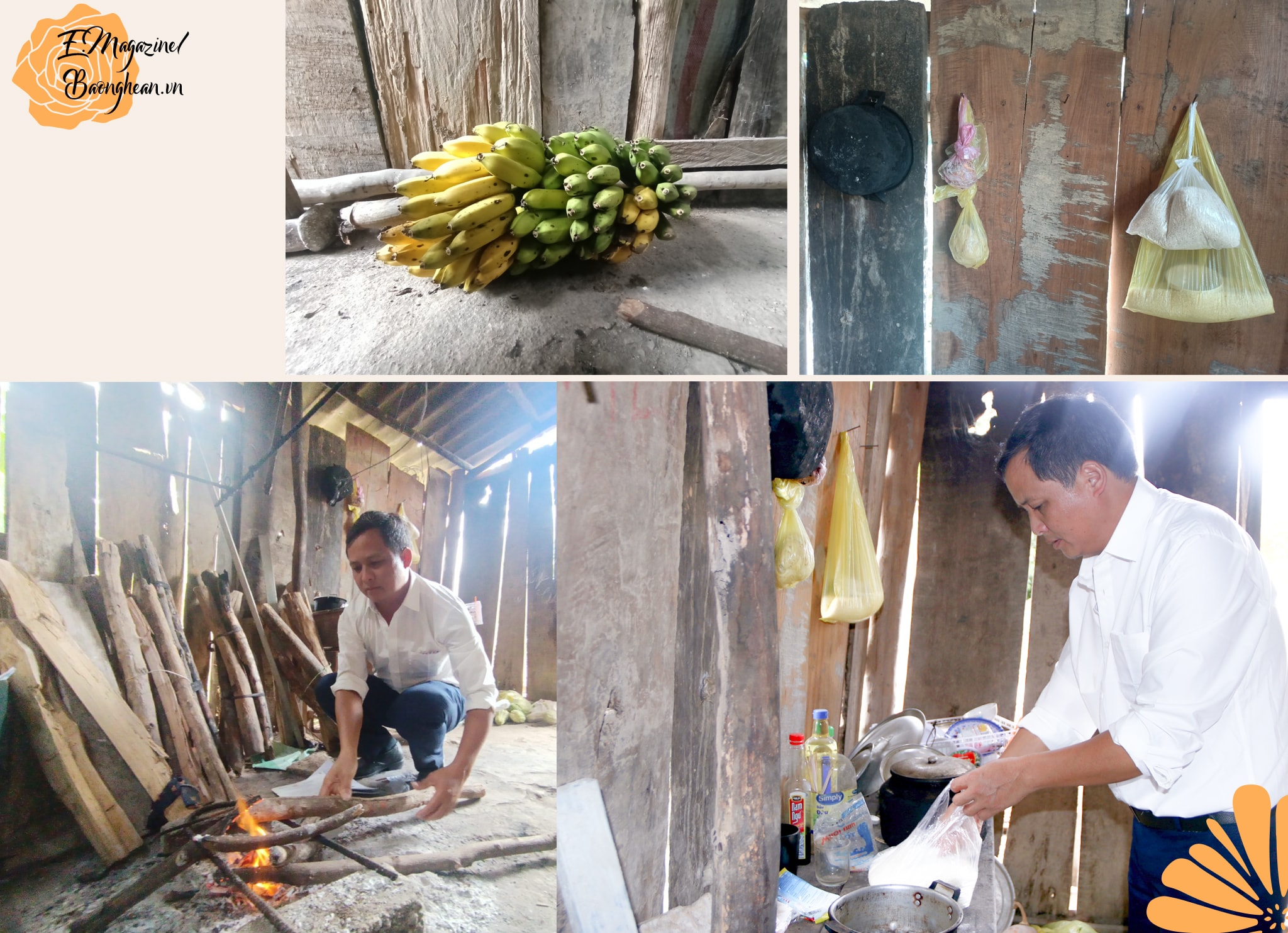
Teacher Khu's house is more than 10 kilometers away from the isolated location. On sunny days, he rides his motorbike to school at dawn and then drives back in the evening. In winter or when it rains, he has to stay in a small hut next to the school. In the hut, there is a simple bed, a wood stove and a little rice for cooking. Usually, at noon, he cooks rice for the whole day, then buries it in the ashes to keep warm. But sometimes, suddenly, the food rations increase when the "honored guests" are the students who stay with him. Because in this land of Pha Noi, many times the parents go to the fields far away, and when it rains, they cannot return, so they have to leave their children with the teacher. The little children follow the teacher like a tail, the teacher one step, the students one step. Sometimes, they even cling to the hem of his shirt in fear if a stranger comes to visit the location.
Knowing how hard it was for him to teach at a small school, the villagers loved him very much and always considered him as their own family member. Sometimes, when they returned from the fields, they would bring him some vegetables and bamboo shoots, sometimes even a wild rat they had just trapped to improve his meals.
Teaching at a remote location without electricity or phone signal, Mr. Khu would review his notes while it was still light so he could continue to go to class the next day. But that was in the summer, and in the winter, the sun didn't even reach the classroom, the classroom was dark without electricity, and teachers and students even had to study at noon while it was still light. Not to mention, although the number of students could be counted on one hand, because he taught a combined class of 1+2, a teacher in a remote area like Mr. Khu often had to work twice as hard to be able to take care of two classes at the same time.

About 5 years ago, in order for Ky Son students not to be left behind when changing textbooks and implementing the new general education program, some primary schools piloted bringing students from grade 3 and above to study at the main campus. Unfortunately, the facilities, boarding houses, and accommodation for the students were lacking, so many schools had to do it step by step. Right at Doc May Primary School, it was not until the 2020-2021 school year that the school was able to bring the first 34 students to study at the boarding school. By the 2021-2022 school year, 68 students were brought to study at the main campus and by this school year, there were 88 students.
Mr. Truong told me that, apart from 15kg of rice and 596,000 VND/month supported by the State, all the boarding supplies are zero. No kitchen utensils, no bowls, chopsticks, rice trays, not even beds, mats, blankets.
After many sleepless nights, Mr. Truong took the risk of writing an open letter to his brothers and friends asking for help. “We must find a way to bring the children back to boarding school, otherwise they will fall behind. But we must ensure their accommodation. Because for the people here, they only entrust their children to the teachers to take care of them if they trust them. If we cannot do that, we will be very sorry to the parents,” Mr. Truong recalled.
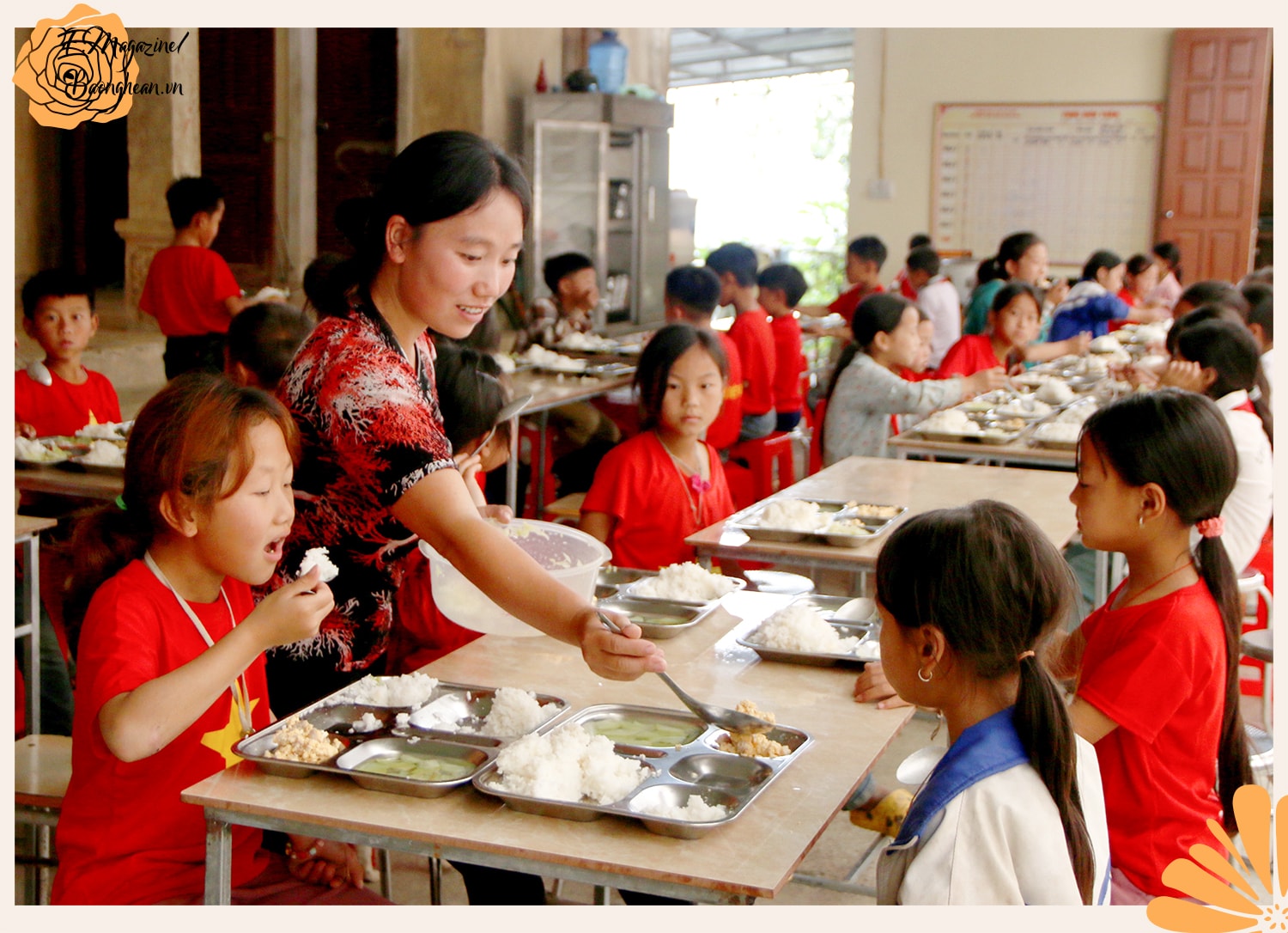
After receiving the open letter from the Principal of a school in a remote mountainous area, many benefactors packed up and sent it to the school. After only a short time, the school had enough pots, pans and even rice trays for boarding students.
Mr. Truong said that in the mountainous communes, students' families are in very difficult circumstances, so it is impossible to mobilize socialization from parents. The only way is to connect with friends and siblings and then through extended relationships so that they understand the real difficulties of the school and care and help.
Since the end of 2021, on behalf of the school, Mr. Truong has sent an open letter to the Tu Tam Volunteer Group in Hanoi, after which they supported the school with 208 warm coats, 1 refrigerator, 1 portable speaker, and 68 metal chests for students to store things, with a total value of more than 60 million VND. In early 2022, the school also contacted a unit in Nghia Dan district and was supported with 3 TV screens worth 36 million VND to serve the study.
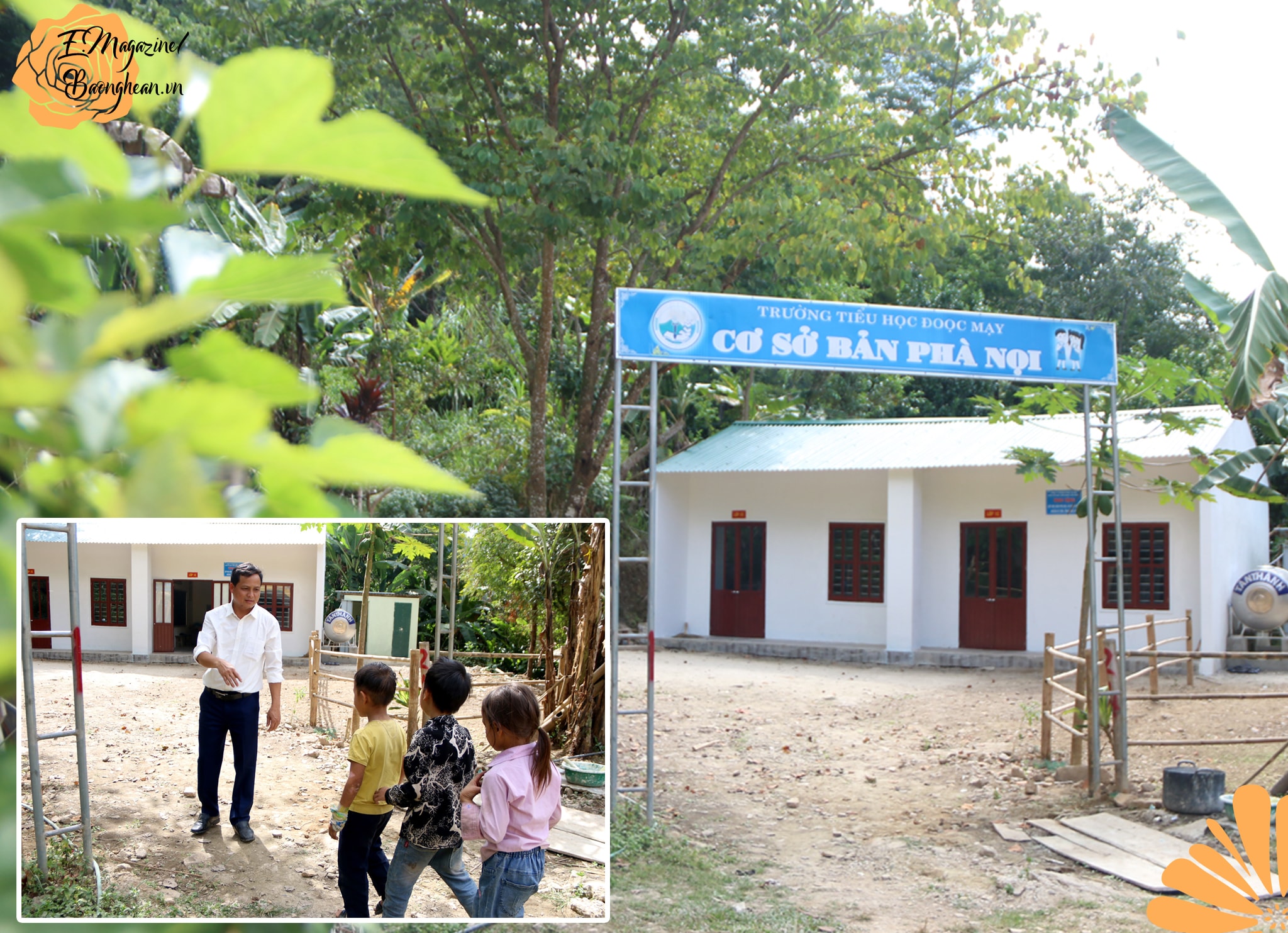
Notably, in June 2022, through an open letter, although they had never set foot in Doc May, the nuns of Co Linh Pagoda (Cam Giang, Hai Duong) and a business in Hanoi supported the construction of 2 classrooms and toilets for the Pha Noi satellite location worth 220 million VND. Thanks to that, from the 2022-2023 school year, the Pha Noi school location has been "solidified" after many years of teachers and students teaching in temporary rooms.
Right before the 2022-2023 school year, through the Tu Tam volunteer group, Doc May Primary School received 84 new desks and chairs worth 70 million VND donated by the Thang Long Kidsmart Education System. Because after 14 years of establishment, the school's facilities have begun to become old and degraded. Many student desks and chairs are damaged and the remaining ones do not meet the standards for students to sit and study.
Although 88 students have been brought to the school to live in the boarding house, they are currently staying in the classrooms after school hours. Therefore, the school has recently boldly contacted the family of Ms. Huynh Thi Min, residing in Ho Chi Minh City, to propose 6 rooms for students worth about 1 billion VND. Currently, Ms. Min's family has agreed and has completed the procedures, waiting for the day to start construction.
Not only the appeal of the collective, of the school board, teachers also proactively contacted their brothers and friends to support necessary supplies for students. Most recently, in November, teacher Luong Thi Xuan, a teacher of the school, also contacted a unit in Lao Cai province to donate 220 warm coats, 70 mats and 70 blankets to students. That is really very happy news for the students of Doc May Primary School when another cold winter comes.
It is impossible to express the joy of the teachers of Doc May Primary School when receiving a lot of support from benefactors and philanthropists. Mr. Truong himself also shared that, due to the lack of facilities of the school, the locality is a poor commune in a remote area, so it cannot meet the needs of upgrading facilities to serve the teaching and learning of the school. "From the consensus and cooperation of the entire school's pedagogical council, and the noble gestures and attention from individuals and organizations are the belief and motivation for teachers and students of the school to strive to overcome difficulties, compete to teach and learn better" - Mr. Truong shared.
